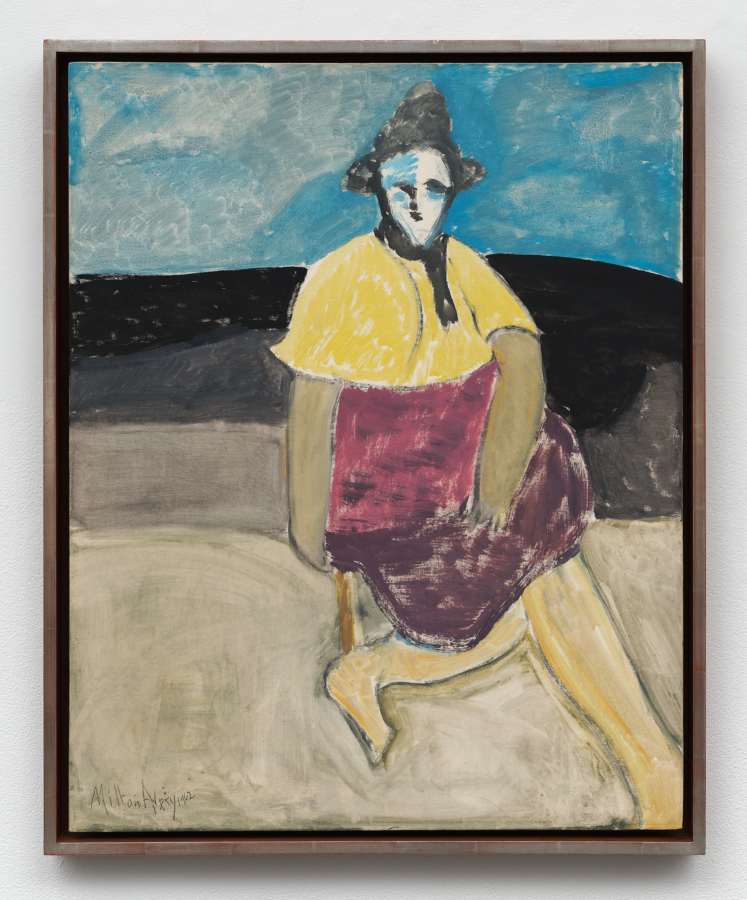June 2003
Download as PDF
View on Tribes Magazine
Peter Bradley is known for his good taste as much as for his savoir-faire; an incredibly impeccable man of honor. On the art scene, he’s known for having the highest standards imaginable in art and personal values. When I first met him over thirty five years ago, Peter worked as a salesman pushing Calder mobiles out of a mainstream, Madison Avenue gallery and wore a three piece suit from one of the finest tailors in town. Driving around in his gray Ferrari, he always imagined it to be a Lamborghini.
His living quarters, a loft on Broadway, stayed sparse, neat, and clean. It contained an enclosed greenhouse, a lavish leather couch, while both primitive and abstract art decorated the space. His studio, right next door to his living quarters, contained roll upon roll of blank canvas and mountains of acrylics. Like many other artists of his generation, the third generation of abstract expressionists, Bradley worked under bright lights with the canvas on the floor and music – Miles Davis and Gil Evans – blasting from the Altec speakers. He would spray paint the canvas with various colors, not necessarily waiting for one coat to dry before applying another. He moved with a certain rhythm which had more to do with his feelings and intuitions than with any rational thought or intellect. His objective, of course, was the primacy of color.
Stacks upon stacks of painted canvases were laid out in a certain area in the studio. About less than a week before any new show he was about to have at Andre Emmerich’s Gallery, Clement Greenberg and the artist Kenneth Noland would put in an appearance and for the next two or three nights, the three of them would edit the canvases, making the pictures out of whole cloth, so to speak. Ensuring the artworks contained no images, they would then cut the canvases and send them out to be framed.
At his openings on 57th Street, or even down at Emmerich’s Soho space at 475 West Broadway, the canvases would be professionally hung, framed, and labeled.
What was clear upon seeing the results was not only that Mr Bradley kept himself busy defining his own space in the world of abstract expressionist art, but that he determined to assure us and himself that that space – and his statement – was unique in comparison to the likes of Jules Olitssky, Larry Poons and Richard Poinsette-Dart, among others. This is not to suggest that Mr. Bradley, from the outset, was unfamiliar with the work of Norman Lewis, father of abstract expressionism, nor that he was unaware of the history of “Western” painting, including the impact made during the twentieth century by Dada, surrealism, and German expressionism, which were the antecedents of his own form.
Obviously, as an African American, Bradley was more than aware of the various traditions in African sculpture and the idea of “making.” Since abstract artists synthesized various traditions, Mr. Bradley has also acquainted himself with Chinese landscape painting and the notions of Zen prevalent in Japanese art. For him, like many others of his generation, it’s always about defining space and having a keen color sense. What one makes of each of his paintings is up to the viewer “alone.” Titles might or might not work as a means of entering the canvas, but like others of his ilk, it’s up to the viewer to decide on the meaning of its content.
One of the most inspiring experiences one may enjoy is to stroll the streets of New York on a bright, sunny day and lend an ear as Mr. Bradley talks about color – the light shimmering off building facades, the colors reflected off the faces and clothes of the many peoples in the city; his love of color in plants and in flowers, and the thrill of it all as one visits galleries, listening as he talks about the various works of art on display.
In other words, Mr. Bradley, when it comes to the subject of life as art, is a man of quality.



